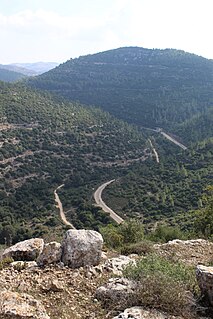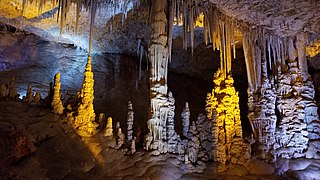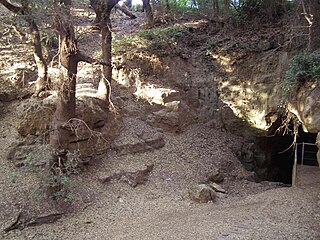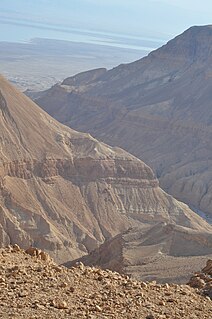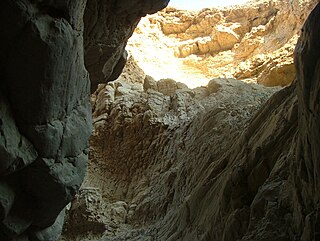Coordinates: 31°34′18″N35°1′53″E / 31.57167°N 35.03139°E

A geographic coordinate system is a coordinate system that enables every location on Earth to be specified by a set of numbers, letters or symbols. The coordinates are often chosen such that one of the numbers represents a vertical position and two or three of the numbers represent a horizontal position; alternatively, a geographic position may be expressed in a combined three-dimensional Cartesian vector. A common choice of coordinates is latitude, longitude and elevation. To specify a location on a plane requires a map projection.
| Nachal Telem | |
|---|---|
The caves of Nachal Telem | |
| Country | Palestinian territories, Israel |
| Physical characteristics | |
| Main source | at the village of Telem, West Bank |
| River mouth | Nachal Guvrin, West Bank |
Nachal Telem (Hebrew: נחל תלם) is a wadi located in the West Bank begins in the western part of the Judaean Mountains and goes westwards. The official Israeli name of the wadi is "Nachal Natziv" (נחל נציב) but this name is not used in practice.
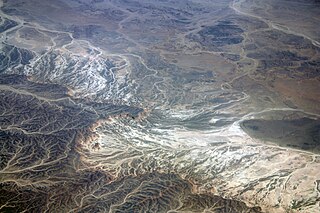
Wadi, alternatively wād, is the Arabic term traditionally referring to a valley. In some instances, it may refer to a dry (ephemeral) riverbed that contains water only when heavy rain occurs.

The West Bank is a landlocked territory near the Mediterranean coast of Western Asia, bordered by Jordan to the east and by the Green Line separating it and Israel on the south, west and north. The West Bank also contains a significant section of the western Dead Sea shore. The West Bank was the name given to the territory that was captured by Jordan in the aftermath of the 1948 Arab–Israeli War, and subsequently annexed in 1950 until 1967 when it was occupied by Israel during the 1967 Six-Day War.

The Judaean Mountains, or Judaean Hills, is a mountain range in Israel and the West Bank where Jerusalem and several other biblical cities are located. The mountains reach a height of 1,026 metres (3,366 ft). The Judean Mountains can be separated to a number of sub-regions, including the Mount Hebron ridge, the Jerusalem ridge and the Judean slopes. These mountains formed the heartland of the Kingdom of Judah, where the earliest Jewish settlements emerged.
The wadi contains the El Kof Nature Reserve (שמורת יער אל קוף) and the Tor-Safa Cave (מערת טור-צפא) which is the largest of the caves in the western slopes of the Judea mountain.
The El Kof Nature Reserve was planted in 1927 during the British mandate by the Department of Government plantings, originally on an area of 1,000 dunams. In 1966 the Forestry Department of the Jordanian government expanded the forest as it extended it with additional 900 dunams. [1]
A dunam, also known as a donum or dunum and as the old, Turkish, or Ottoman stremma, was the Ottoman unit of area equivalent to the Greek stremma or English acre, representing the amount of land that could be ploughed by a team of oxen in a day. The legal definition was "forty standard paces in length and breadth", but its actual area varied considerably from place to place, from a little more than 900 m2 in Ottoman Palestine to around 2500 m2 in Iraq.
On December 28, 2007 a terrorist attack was carried out in Nahal Telem in which two Jewish tourists were killed. [2]


